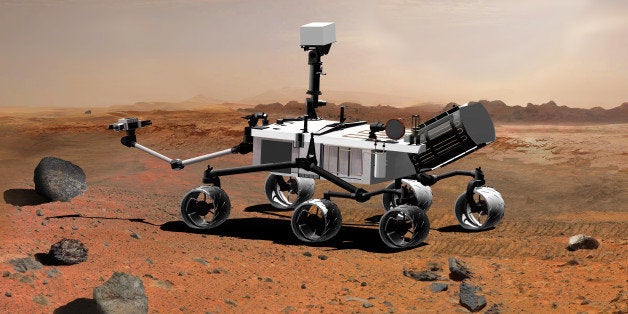
NASA's Mars Curiosity rover is already pretty brainy, but like any robot, it still requires direction.
Researchers with NASA’s Jet Propulsion Laboratory (JPL) are hoping to change that by developing a new camera for the NASA rovers. The TextureCam, as it's been dubbed, would allow future rovers to carry out missions without waiting on instructions from controllers back on Earth -- a process that can take a long time, depending on the rover's distance from home.
Published recently in Geophysical Research Letters, the TextureCam research details how the new rover camera is capable of capturing 3D images. An on-board processor then analyzes the texture of the materials in the photos and evaluates the distance between objects to identify features of scientific importance.
Currently, Mars Curiosity operators must wait 20 minutes to receive information from the red planet's rover. It takes another 20 minutes to relay instruction back to the rover, making real-time control difficult.
"Right now for the rovers, each day is planned out on Earth based on the images the rover took the previous day," Kiri Wagstaff, a computer scientist and geologist at JPL in Pasadena, Calif., said in a written statement. "This is a huge limitation and one of the main bottlenecks for exploration with these spacecraft."
As NASA pushes ahead with its exploration efforts, seeking to probe celestial bodies beyond Mars, communication delay becomes even greater. With the new two-lens camera system developed by the JPL team, rovers would be capable of not only photographing rocks and surface materials but also analyzing the collected data.
The TextureCam may be added to future NASA rovers, including the next Mars rover, which is set to launch in 2020.
